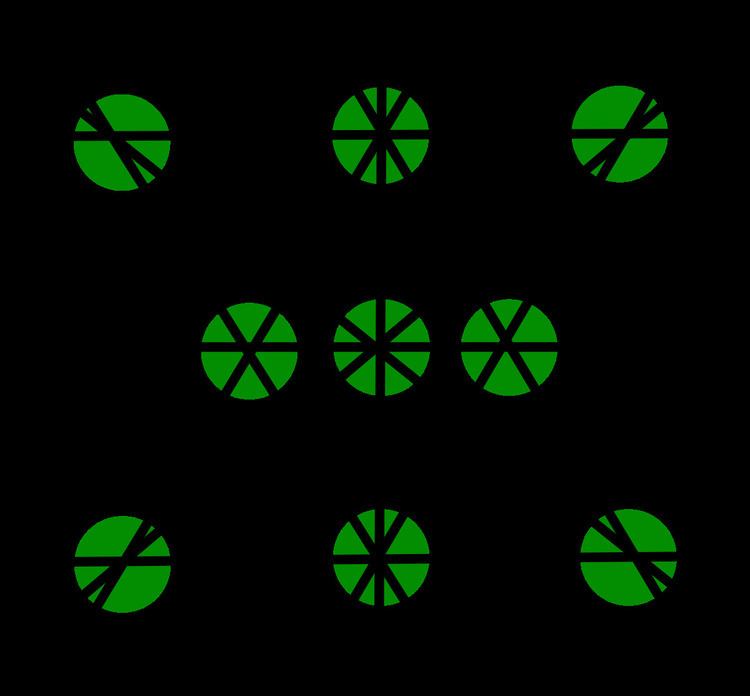 | ||
In discrete geometry, the original orchard-planting problem asks for the maximum number of 3-point lines attainable by a configuration of points in the plane. It is also called the tree-planting problem or simply the orchard problem. There are also investigations into how many k-point lines there can be. Hallard T. Croft and Paul Erdős proved tk > c n2 / k3, where n is the number of points and tk is the number of k-point lines. Their construction contains some m-point lines, where m > k. One can also ask the question if these are not allowed.
Contents
Integer sequence
Define t3orchard(n) to be the maximum number of 3-point lines attainable with a configuration of n points. For an arbitrary number of points, n, t3orchard(n) was shown to be (1/6)n2 − O(n) in 1974.
The first few values of t3orchard(n) are given in the following table (sequence A003035 in the OEIS).
Upper and lower bounds
Since no two lines may share two distinct points, a trivial upper-bound for the number of 3-point lines determined by n points is
Using the fact that the number of 2-point lines is at least 6n/13 (Csima & Sawyer 1993), this upper bound can be lowered to
Lower bounds for t3orchard(n) are given by constructions for sets of points with many 3-point lines. The earliest quadratic lower bound of ~(1/8)n2 was given by Sylvester, who placed n points on the cubic curve y = x3. This was improved to [(1/6)n2 − (1/2)n] + 1 in 1974 by Burr, Grünbaum, and Sloane (1974), using a construction based on Weierstrass's elliptic functions. An elementary construction using hypocycloids was found by Füredi & Palásti (1984) achieving the same lower bound.
In September 2013, Ben Green and Terence Tao published a paper in which they prove that for all point sets of sufficient size, n > n0, there are at most ([n(n - 3)/6] + 1) = [(1/6)n2 − (1/2)n + 1] 3-point lines which matches the lower bound established by Burr, Grünbaum and Sloane. This is slightly better than the bound that would directly follow from their tight lower bound of n/2 for the number of 2-point lines: [n(n − 2)/6], proved in the same paper and solving a 1951 problem posed independently by Gabriel Andrew Dirac and Theodore Motzkin.
